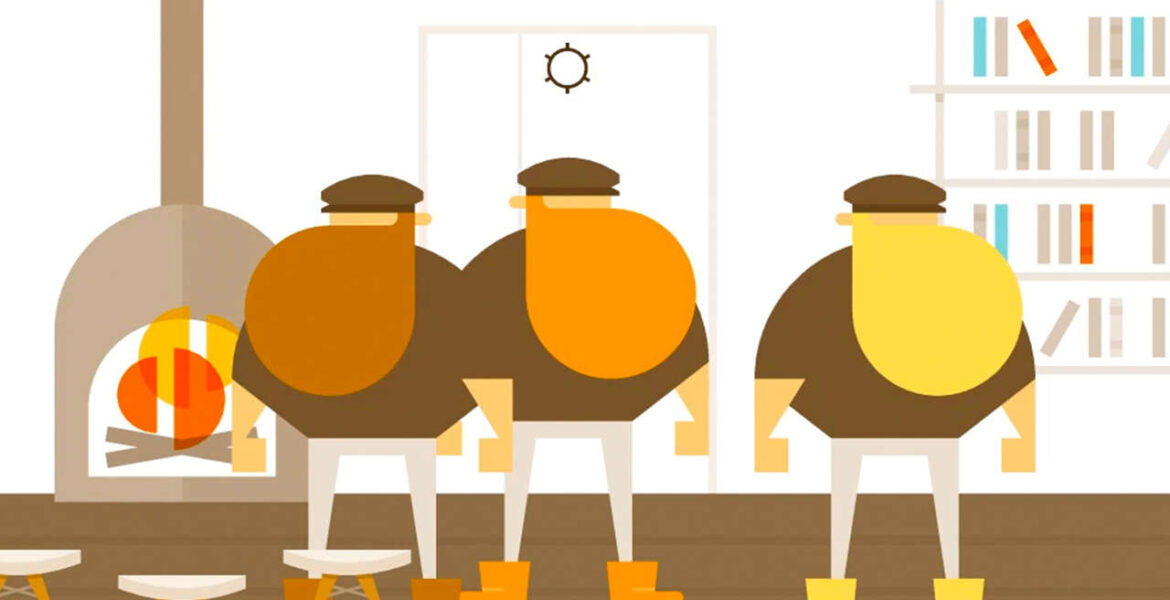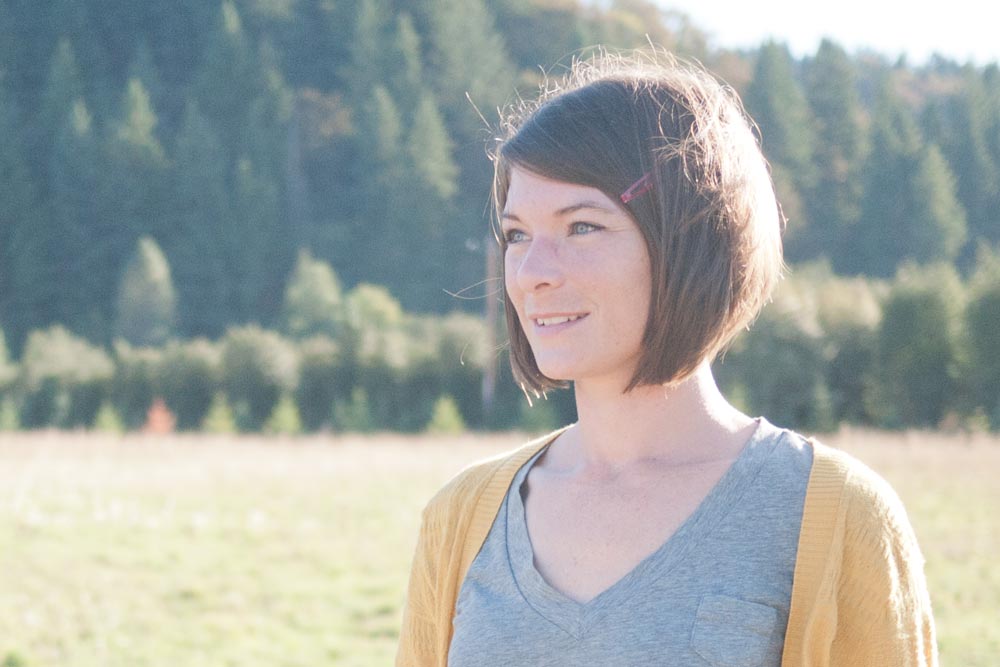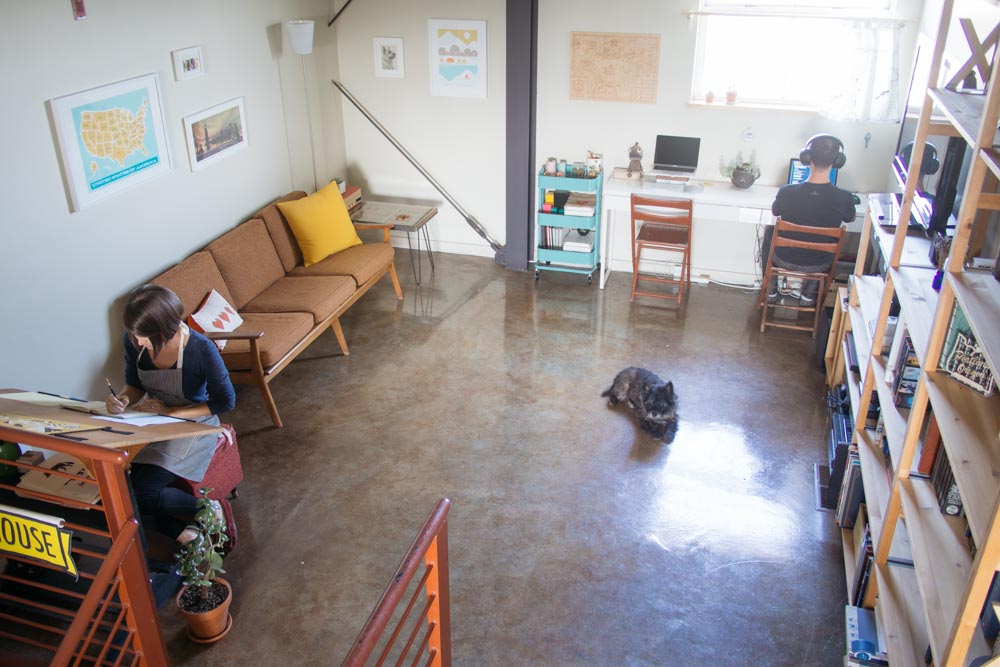
The Quiet Adventurers Behind Burly Men at Sea
This is one of a few pieces on this site rescued from the digital scrapheap, originally published for a site that’s no longer online. I’ll begrudgingly remove if any shadowy publishing types compel me to relinquish what’s rightfully theirs, despite having unceremoniously binned it themselves, but come on. That’d just be silly.
It’s presented as is, so you’ll have to forgive any outdated references or generally shoddy writing.
–
It all started with a screening of Indie Game: The Movie at Pixar’s offices.
The 2012 documentary, which revealed the intense, often painful efforts of small teams and individuals involved in the burgeoning indie game development community, showed Pixar workers a different kind of creative industry. For David Condolora, then ensconced in the cushy world of an employee at the world’s premier animation studio, these altogether smaller, messier operations struck a chord.
“It showed me that a small team of just a couple people could create a game,” recalls Condolora. David and his wife Brooke, an illustrator and graphic designer, had already been exploring different avenues for collaborative projects. The perfect medium seemed to have fallen into their laps.
“It just kind of sparked the idea: Brooke’s an artist, I know a little bit of programming, what can we do together? I went back to my desk and I sent Brooke a message that said ‘we’re going to make a game together.'” If you think this is something of a trite origin story, then at least Condolora agrees. There’s a tinge of embarrassment as he recounts the “corny” tale.

“It just felt like something we should have thought of before,” shrugs Brooke. “It felt perfect for us. We both grew up loving games, we love storytelling – it just seemed so obvious.” So while it may seem remarkable how quickly this whim solidified, with the pair beginning to plan for their first game the very next day, to Brooke and David it just made sense.
That first game was Doggins, a point-and-click adventure game for mobile based around the imagined dreams of the couple’s pet dog. Both were reared on classic-era adventures and, according to David, “were playing story-driven games together all the time”, so the genre seemed the obvious choice.
Doggins is a short, sweet game with cute art, and it was a crucial step in moving from a couple dabbling in games to an actual indie studio. David wanted to avoid the overambition that he saw as thwarting so many first-time developers. “I was very cognisant of scope at that time. I thought that we should be doing something very simple, that we could make really quickly.”
In reality, even with this pared-back focus, Doggins took two years to complete while David remained full-time at Pixar. But somewhere along the line, Brooke and David settled on the collective name Brain&Brain – supposed to represent the distinct yet complimentary skills that each brings to the table from their “very disparate worlds” – and Brooke went from part-time to full-time work on the game.

Doggins
But more importantly, Doggins was where Brain&Brain began to develop its own style. The games industry is by and large peopled by those who have spent their lives in love with games and aspiring to be a part of their development. With Brooke coming from a background in graphic design, and David from animation and filmmaking, their perspective is notably different.
“I think it gives us a different take on games from other developers who maybe started in games,” says Brooke. “I guess our art style tends to be more inclined toward graphic design, which is my background.”

“We’re kind of allergic to things that are too gamey,” David adds. “We try to have as little user interface in our games as possible, we don’t want to put too much data on screen. Scores, lives – we want as little of that as possible, to remove barriers and create more immersion.”
“We’re also very interested in how filmmaking – animated films in particular – crosses over with gaming, so our animation pipeline is very traditional: hand-drawn, on paper. We don’t do any kind of skeletal or spine animation; it’s bespoke, frame-by-frame keyframed animation.”
“We’re even interested in lowering the game’s framerate so we can get a cinematic framerate rather than 60 frames-per-second,” laughs David. “That’s kind of controversial!”
This philosophy became far more apparent in Burly Men at Sea, Brain&Brain’s second release and its first on PC and console, which does almost nothing in a standard, “gamey” way. Inspired by Scandinavian folklore, it’s a game about adventure for its own sake; about the thrill of striking out into the unknown and the quiet joy of homecoming. It’s cyclical in structure, divorcing ‘the ending’ from the all-consuming importance placed upon it in games, and more closely resembles an interactive storybook than anything from an established video game genre.
“It’s developed,” says David of the Brain&Brain style. “Doggins is a little different, but it’s still pretty clearly a point-and-click adventure game. Versus Burly Men at Sea, which is pretty hard to describe from a genre perspective – it has elements of point-and-click adventure, it has elements of sidescroller, it has elements of visual novel, but it’s not any of those things.”
Burly Men at Sea, recently ported to Switch, is not one story, but several. Each one begins and ends the same: three stout brothers leave their sleepy island home on a boat, and around half an hour later (in real time) they’re returning. But what happens in each of those 30-minute expeditions varies wildly depending on the path pursued by the player.

The inspired twist? Each of these unique playthroughs generates a code which, when entered on the Burly Men at Sea website, allows the player to buy a beautiful, hardback storybook retelling the tale with expanded writing and all-new art. Publishing these books fulfilled a personal ambition for Brooke, and also created a kind of meta-narrative – the already clean visual style is simplified one level further in the books, as though drawn by the people within the game world.
Condolora left Pixar during the development of Burly Men at Sea, with the pair relocating from the Bay Area to Northwest Arkansas. They are now a long way from any recognisable indie game development hub (other developers at GDC apparently found their general approach “a little crazy”), have recently started a Patreon (“it gives us a reason to document our work”), and started multiple projects.
There’s an unseen puzzle game, and two story-based projects; Brooke’s “more experimental,” David’s “set in the American Old West.”
“We’re kind of building on what we did in Burly Men at Sea,” says David. “We’re still looking at replayability, interactive storytelling. But stylistically: very, very different.”
Based on Burly Men at Sea in particular, it’s hard not to be excited about what’s next from Brain&Brain. It is a reminder of how powerful fresh perspectives can be, and how they can uncover places you never imagined existed.
